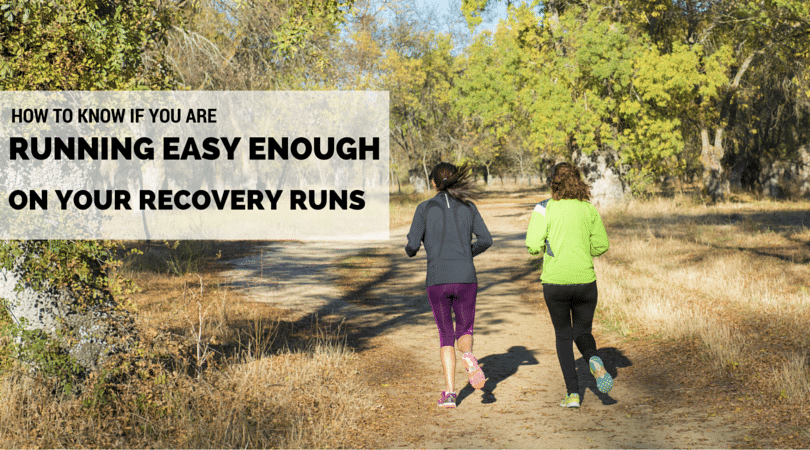As a continuation of my series on Running with a Purpose, I want to talk about the importance of easy recovery runs.
Runners, whether they are beginners or experts, have an inherently obsessive and compulsive mind set when it comes to training.
Any running, as long as it is harder or faster than the day before, is good training according to the brain. However, despite what Kanye West might think, “harder, faster, stronger” does not always equal better.
The body is a complex machine that responds to training stimulus only in conjunction with rest and recovery.
It does not have an infinite ability to heal itself and become faster and stronger without the proper rest in between hard bouts.
For runners, this means you must factor in recovery days as an essential part of your training program and follow them as they were meant to be.
For some, this will mean a day of complete rest from training, for most it means taking some training sessions easier and not pushing yourself hard.

What is a Recovery Run? How do I Know if I am Running Easy?
A true recovery day should not be hard in the slightest.
You should be training at a pace that you are barely breathing hard and could maintain a short conversation. Despite how good you feel when running easy, you should not push the pace on a recovery day; otherwise you are defeating the purpose of the workout.
Most people are amazed at how slow they must truly go in order to accomplish this task, and sometimes it can feel almost painfully slow.
For example, a half marathon runner should run their recovery runs almost 1-2 minutes slower than their half marathon pace in order to maintain a true recovery pace.
For marathoners, this pace is closer to 60-90 seconds slower than marathon goal pace.
For some athletes the idea of going slow may seem counterproductive to what they are trying to accomplish; however, all the hard training runs, interval workouts, and long runs are useless if you do not let your body recover from the effort and repair the muscle damage you have done.
The body gets stronger and faster by breaking down muscle (hard training) and then allowing the body to build itself back up stronger than before (recovery) and repeating the process until you are in shape and ready to race.
To see a more in-depth visualization of this process, watch this slideshow.
If you are still not convinced, we have covered this topic in various other articles, and you can read more in each of them….maybe after reading them all, you will see just how important it is, especially if you read Matt Fitzgerald’s book; 80/20 running.
How Running 80% Easy Could Make You 23% Faster
The 2 Simple Reasons Your Easy Days are Ruining Your Training
How Do Easy Runs Help You Race Faster (and what exactly your easy pace should be)
Why You Don’t Need to Train Faster to Run Faster




4 Responses
Why 60-90 seconds. If your easy pace is slower, even 2 or 3 min . I run recovery runs with no watch,
,
Recovery days for me is s day off running. I have been running for 20 years and running 6 to 7 days of running has led to many injuries. I am in my 30’s now and choose to run 5 days a week, anymore and I start to find it boring and injuries occur. Our bodies need rest in between to restore itself if not burn out will occur and it’s not worth the pain
Exactly Caroline! Glad to hear you have learned with time what your body responds best to. We could not agree more! Thanks for sharing!
I’ve been weight training for years and just started running consistently a few weeks ago. At this point, I’m running 3 days per week. It’s been a combination of tempo runs, intervals, and long runs. Considering that I’m only running 3 days per week, would you still consider a recovery run to be necessary? Thanks!